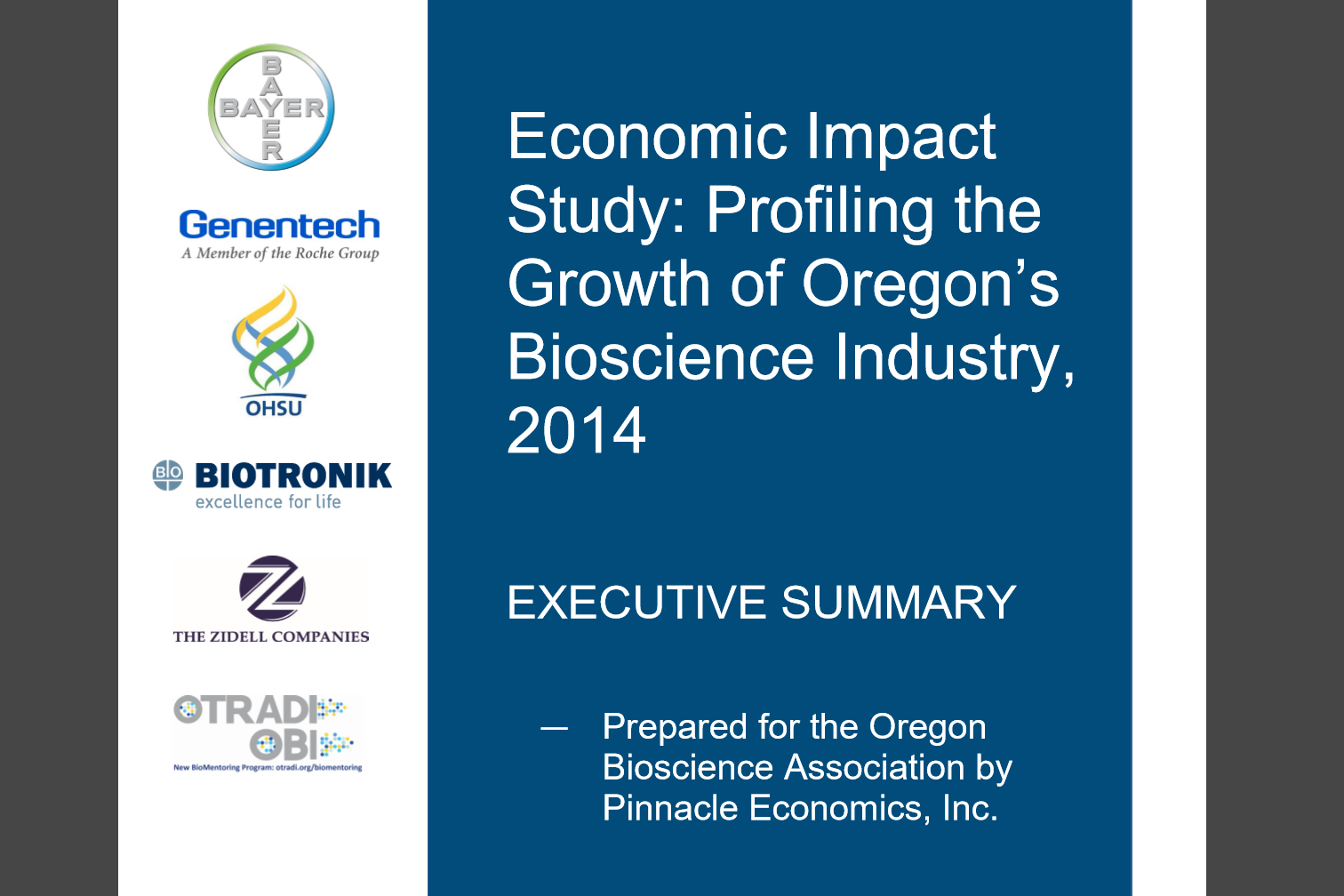
Acumen is honored and thankful to Oregon Biosciences Association to be invited to a special BioSciences, Oregon Economic Impact Study event with special speakers: Suzanne Bonamici (1st District), Kurt Schrader (5th District), Gary Locke (Fmr. US Ambassador in China, US Secretary of Commerce, and Washington State Governor), Denise McCarty (Executive Director, Oregon Bioscience Association), and Andrew Barofsky (CEO/President of RevMedx).
Click here to see the summary report.
The numbers speaks for themselves. Check out the The Portland Business Journal Article supporting Oregon Biosciences Association and the industries effects in Oregon.
Oregon bioscience industry packs a $10.3B punch
The bioscience sector in Oregon may not get as much attention as San Diego or Boston, but it accounts for a sizable chunk of jobs and wages.
So reports a new study, which found the biotechnology and life science sector generated $10.3 billion in total economic output in 2014. The report by Pinnacle Economics Inc. was prepared for the Oregon Bioscience Association.
Here’s a snapshot of direct economic activity associated with the industry in 2014:
17,874 jobs.$1.3 billion total wages.Average annual wage of $74,188, 62 percent greater than the statewide average wage for private sector employment.$3.8 billion in exports.$171.5 million in state and local taxes paid by bioscience firms and employees.
“It’s growing and growing fast,” said Alec Josephson, founder and president of Camas, Washington-based Pinnacle. “We’re seeing growth across all measures.”
Josephson said bioscience brings in “new money to the state from exports,” rather than just recirculating dollars domestically.
Between 2002 and 2014, bioscience employment grew by 68 percent, an addition of 6,000 jobs. Private sector employment increased overall by 10 percent in Oregon during that period.
Wages grew during that period as well, by 56 percent, compared to a 39 percent increase statewide.
More than half of bioscience companies are located outside of Portland. Women compose 47 percent of the bioscience workforce and minority workers 22 percent.
Josephson analyzed payroll data from the state, including the bioscience research arms of universities and hospitals, as well as larger private sector employers such as Biotronik and Genentech and small startups that employ fewer than 10 workers.
“We’re catching the early stages of a growth curve that’s going to continue,” said Dennis McNannay, Oregon Bio’s immediate past executive director. “This is contrary to what most people reflexively believe about the industry. This is empirical data, proof positive that we’re on the path. It may not make us the same size as San Francisco or others, but it’s how Oregon gets proportionately to an impactful industry.”
__________________________________
Elizabeth Hayes
Staff Reporter
Portland Business Journal
